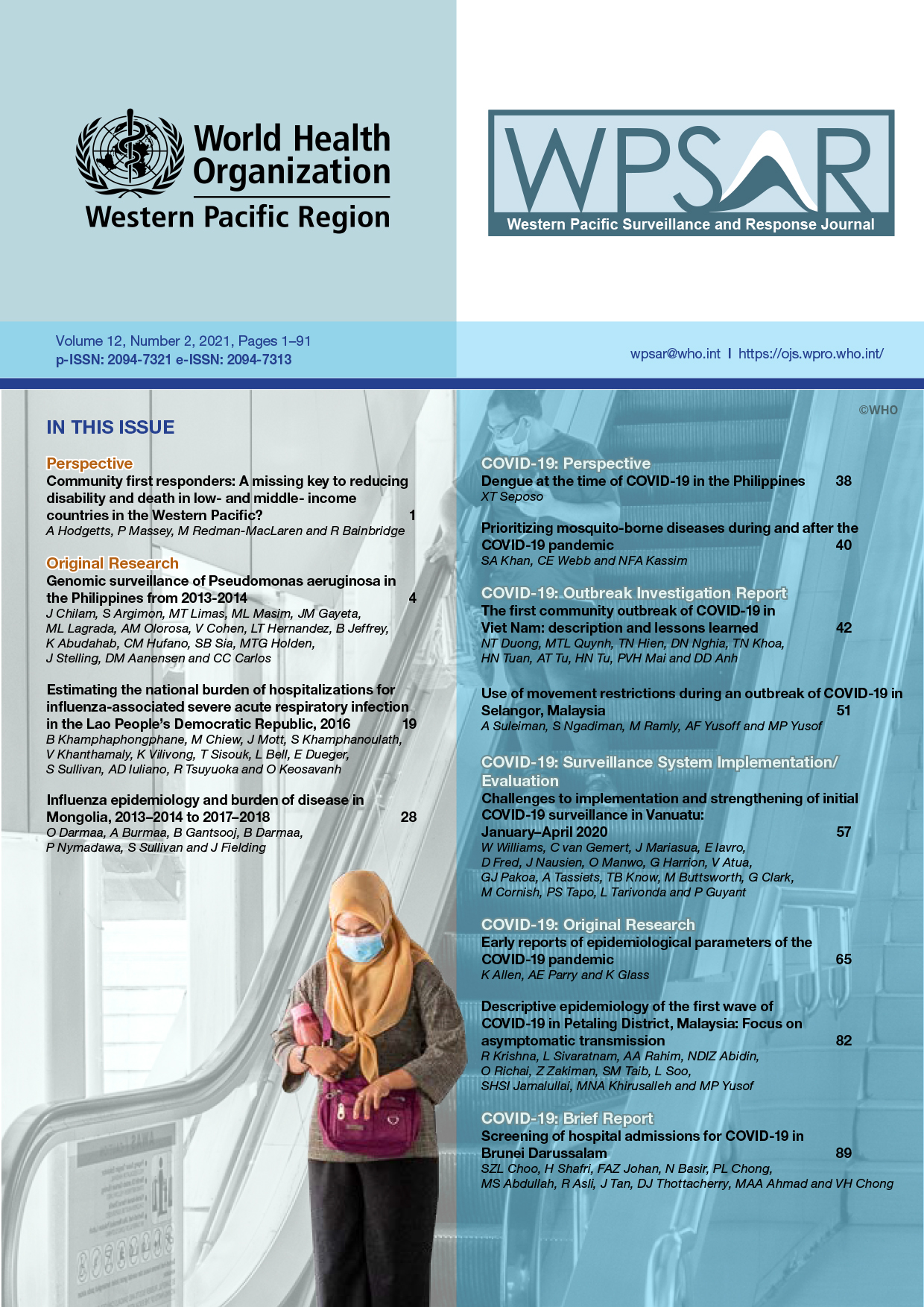Prioritizing mosquito-borne diseases during and after the COVID-19 pandemic
DOI:
https://doi.org/10.5365/wpsar.2020.11.3.017References
Organization WH. Novel Coronavirus (2019-nCoV) situation reports. 2020; Available from https://www.who.int/emergencies/diseases/novel-coronavirus-2019/situation-reports.
Hoehl S, Berger A, Kortenbusch M, Cinatl J, Bojkova D, Rabenau H, et al. Evidence of SARS-CoV-2 infection in returning travelers from Wuhan, China. New England Journal of Medicine. 2020.
Cohen JM, Smith DL, Cotter C, Ward A, Yamey G, Sabot OJ, et al. Malaria resurgence: a systematic review and assessment of its causes. Malaria journal. 2012;11(1):122.
Tariq RM, Naqvi SN-H, Choudhary MI, Abbas A. Importance and implementation of essential oil of Pakistanian Acorus calamus Linn., as a biopesticide. Pak J Bot. 2010;42(3):2043-50.
Organization WH. Malaria https://www.who.int/news-room/fact-sheets/detail/malaria January 14, 2020. 2020.
Organization WH. Achieving the malaria MDG target: reversing the incidence of malaria 2000-2015: World Health Organization; 2015.
Kumar K, Pigazzini A, Stenson B. Financing for malaria elimination. San Francisco: Cambridge Economic Policy Associates and UCSF Global Health Group. 2013.
Shretta R, Avanceña AL, Hatefi A. The economics of malaria control and elimination: a systematic review. Malaria journal. 2016;15(1):593.
Gallup JL, Sachs JD. The economic burden of malaria. The American journal of tropical medicine and hygiene. 2001;64(1_suppl):85-96.
Wilson AL, Courtenay O, Kelly-Hope LA, Scott TW, Takken W, Torr SJ, et al. The importance of vector control for the control and elimination of vector-borne diseases. PLoS Neglected Tropical Diseases. 2020;14(1):e0007831.
Islam MN, ZulKifle M, Sherwani AMK, Ghosh SK, Tiwari S. Prevalence of malaria, dengue, and chikungunya significantly associated with mosquito breeding sites. The Journal of IMA. 2011;43(2):58.
Wikipedia c. 2019–2020 dengue fever epidemic. In Wikipedia, The Free EncyclopediaRetrieved April 14, 2020. 2020, April 14.
Wilder-Smith A, Ooi E-E, Horstick O, Wills B. Dengue. The Lancet. 2019;393(10169):350-63.
Organization WH. World malaria report 2019. 2019.
Anders KL, Hay SI. Lessons from malaria control to help meet the rising challenge of dengue. The Lancet Infectious Diseases. 2012;12(12):977-84.

